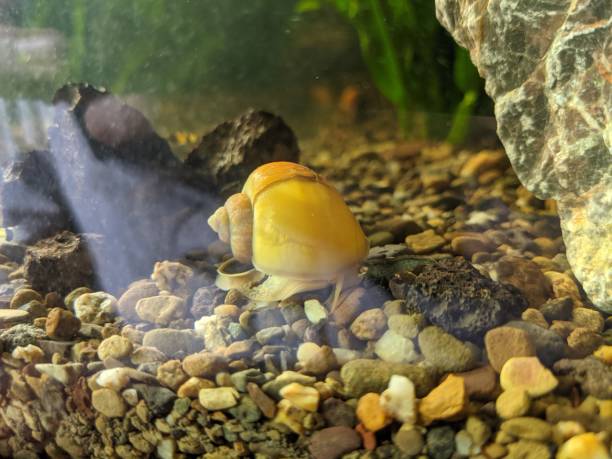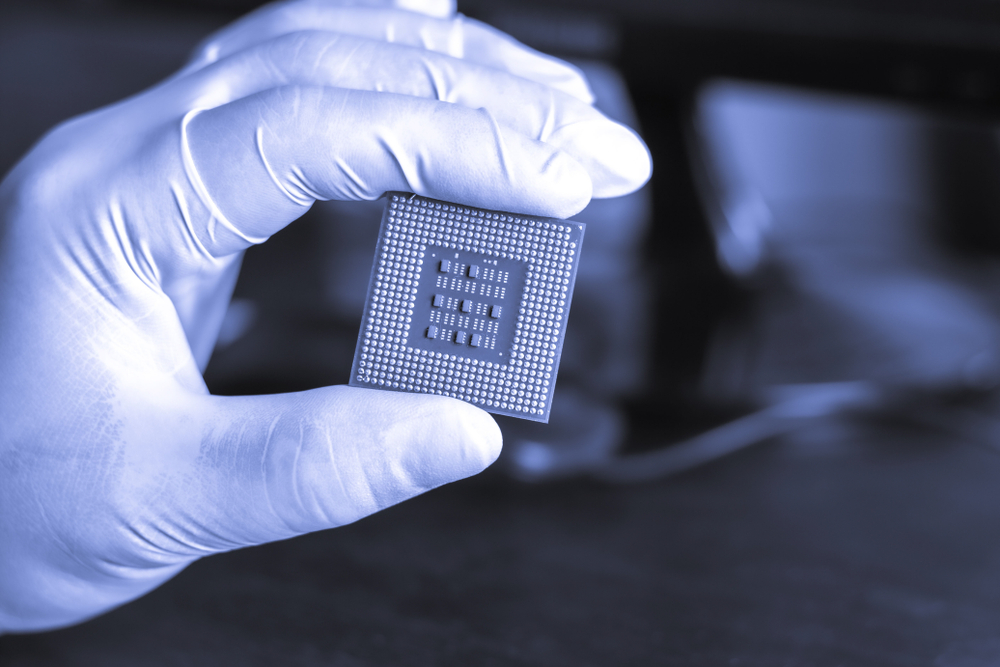Biomechanics of the Javelin Throw: Unlocking Peak Performance
The graceful arc of a javelin soaring through the air is a testament to human strength, technique, and the intricate dance of physics at play. As one of track and field's most dynamic events, javelin throwing has captivated audiences for centuries. But beneath the surface of this seemingly simple act lies a complex interplay of biomechanical principles that, when mastered, can propel athletes to record-breaking distances. This exploration into the biomechanics of javelin throwing unveils the science behind the spectacle and offers insights into how athletes and coaches can optimize performance.

In the early 20th century, javelin throwers primarily used a straight arm technique, believing that a rigid arm would transfer more power to the implement. However, as sports science progressed, athletes and coaches began to recognize the importance of a more dynamic approach. The 1950s saw the emergence of the “Finnish technique,” characterized by a run-up with the javelin held over the shoulder, followed by a powerful cross-step and release.
The most significant shift came in the 1960s and 1970s with the development of the “rotation technique.” This method, pioneered by American thrower Bud Held, incorporated a more pronounced rotation of the upper body and hips, allowing for greater torque and, consequently, increased throwing distance. This technique remains the foundation of modern javelin throwing, though it continues to be refined as our understanding of biomechanics deepens.
Biomechanical Principles in Javelin Throwing
At its core, the javelin throw is an exercise in energy transfer. The thrower must generate kinetic energy through the run-up and throwing motion, then efficiently transfer that energy to the javelin. This process involves several key biomechanical principles:
-
Linear Momentum: The run-up phase allows the athlete to build linear momentum, which is crucial for initiating the throw. The speed and rhythm of this approach significantly impact the final throwing distance.
-
Angular Momentum: As the thrower transitions from the run-up to the throwing position, they must convert linear momentum into angular momentum. This is achieved through the rotational movement of the body, particularly the torso and hips.
-
Stretch-Shortening Cycle: The throwing motion utilizes the stretch-shortening cycle, where muscles are first stretched (eccentric contraction) before rapidly shortening (concentric contraction). This phenomenon, also known as elastic energy storage and release, enhances the power of the throw.
-
Kinetic Chain: The javelin throw exemplifies the kinetic chain principle, where energy is transferred sequentially from larger, more proximal body segments to smaller, more distal ones. This chain typically follows the sequence: legs, hips, torso, shoulder, upper arm, forearm, and finally, the hand.
-
Release Parameters: The angle, velocity, and height of release are critical factors determining the javelin’s trajectory and distance. Optimal release angles typically range between 32-36 degrees, depending on the thrower’s technique and environmental conditions.
The Run-up: Building Momentum
The run-up phase is far more than a simple sprint towards the throwing line. It’s a carefully choreographed sequence designed to build optimal momentum and set up the thrower for an effective release. Biomechanical analysis has revealed several key components of an effective run-up:
-
Acceleration Pattern: Elite javelin throwers typically employ a gradual acceleration pattern, reaching peak velocity just before the throwing stride. This allows for better control and positioning during the crucial final steps.
-
Stride Length and Frequency: As the thrower approaches the throwing position, there’s often a slight increase in stride frequency coupled with a maintenance or slight decrease in stride length. This helps maintain speed while preparing for the transition to the throwing position.
-
Penultimate Step: The second-to-last step, known as the penultimate step, is crucial for setting up the final throwing position. It’s typically longer than the previous steps and involves a lowering of the thrower’s center of mass, preparing for the explosive upward motion during release.
-
Block Leg Placement: The final step, or block step, involves planting the opposite leg to the throwing arm firmly on the ground. This creates a stable base and allows for the effective transfer of momentum from the lower body to the upper body.
Research has shown that the run-up contributes significantly to the javelin’s final velocity, with some studies suggesting it accounts for up to 40% of the release speed. However, raw speed isn’t everything; the ability to transition smoothly from the run-up to the throwing position is equally crucial.
The Crossover: Transitioning to Throw
The crossover phase marks the critical transition from the linear momentum of the run-up to the rotational movement of the throw. This phase typically involves two to four crossover steps, during which the thrower begins to rotate their hips and shoulders away from the throwing direction.
Key biomechanical aspects of an effective crossover include:
-
Hip-Shoulder Separation: As the thrower crosses over, they aim to create a “lag” between the rotation of their hips and shoulders. This separation, often referred to as the “tension arc,” stores potential energy that can be explosively released during the throw.
-
Arm Positioning: During the crossover, the throwing arm should remain relaxed and extended behind the body. This position helps maintain the stored energy and sets up for a longer pull on the javelin during the throw.
-
Center of Mass Control: Throughout the crossover, elite throwers maintain a low and stable center of mass. This aids in balance and prepares for the explosive upward motion during release.
-
Rhythm and Timing: The crossover steps should maintain a smooth, rhythmic quality that flows seamlessly into the throwing position. Any disruption in this rhythm can lead to a loss of momentum and reduced throwing distance.
Biomechanical studies have shown that the effectiveness of the crossover phase significantly impacts the final throwing distance. A well-executed crossover can increase the range of motion for the throw and enhance the stretch-shortening cycle in the athlete’s muscles, leading to a more powerful release.
The Power Position: Preparing for Release
The power position, sometimes called the “delivery stance,” is the final body configuration before the explosive throwing action begins. Achieving an optimal power position is crucial for maximizing the transfer of energy from the thrower’s body to the javelin.
Key elements of an effective power position include:
-
Lower Body Alignment: The rear leg (same side as the throwing arm) should be bent at the knee, with the foot actively pushing against the ground. The front leg, or block leg, should be slightly bent and positioned to resist the forward momentum of the throw.
-
Trunk Position: The upper body should be tilted back slightly, with the non-throwing side facing the direction of the throw. This position helps create tension in the core muscles and sets up for a powerful rotation.
-
Arm and Shoulder Configuration: The throwing arm should be extended back, with the elbow at or above shoulder height. The non-throwing arm is typically held high and tight to the body, ready to lead the rotation.
-
Javelin Positioning: The javelin should be held close to the thrower’s head, with the tip aligned with or slightly above eye level. This position allows for a long pulling action during the throw.
-
Weight Distribution: In the power position, the thrower’s weight should be primarily on the rear leg, ready to be explosively transferred forward during the throw.
Biomechanical analysis has revealed that the power position significantly influences the release parameters of the throw. A well-executed power position can increase the acceleration path of the javelin and optimize the angle of release, both crucial factors in achieving maximum distance.
The Throwing Action: Explosive Energy Transfer
The throwing action is the culmination of all preceding phases, where the energy generated through the run-up, crossover, and power position is explosively transferred to the javelin. This phase occurs in a fraction of a second but involves a complex sequence of movements that must be precisely coordinated for maximum effect.
Key biomechanical aspects of the throwing action include:
-
Sequential Muscle Activation: The throw begins with the powerful extension of the rear leg, driving the hips forward. This is followed by the rotation of the torso, then the shoulder, upper arm, forearm, and finally, the wrist and fingers. This sequence follows the kinetic chain principle, allowing for optimal energy transfer.
-
Trunk Rotation: As the throw begins, the trunk rapidly rotates from a backward-leaning position to a forward-leaning one. This rotation is a major contributor to the javelin’s final velocity.
-
Shoulder Internal Rotation: One of the most critical aspects of the throw is the rapid internal rotation of the shoulder joint. This movement, which can reach angular velocities of up to 7000 degrees per second in elite throwers, is a primary contributor to the javelin’s release velocity.
-
Elbow Extension: The extension of the elbow joint, coupled with the internal rotation of the shoulder, creates a whip-like effect that accelerates the javelin. The timing of elbow extension is crucial; it should occur after the shoulder has begun its forward rotation.
-
Wrist and Finger Action: In the final moments before release, the wrist flexes and the fingers impart the last bit of force on the javelin. While these movements contribute relatively little to the overall throwing velocity, they are crucial for controlling the javelin’s orientation at release.
-
Block Leg Action: Throughout the throw, the front leg (block leg) remains relatively straight, providing a stable base against which the thrower can generate force. The block leg also helps to transfer the thrower’s forward momentum into upward momentum, contributing to the optimal release angle.
Research has shown that the throwing action accounts for the majority of the javelin’s final velocity, with some studies suggesting it contributes up to 70% of the release speed. The effectiveness of this phase is highly dependent on the proper sequencing of movements and the athlete’s ability to maintain proper body positions under high-speed conditions.
Release Parameters: The Final Frontier
The moment of release is where all the preceding biomechanical factors culminate to determine the javelin’s trajectory and, ultimately, the throwing distance. Three key parameters govern the javelin’s flight:
-
Release Velocity: This is the most critical factor in determining throwing distance. Elite male javelin throwers can achieve release velocities of over 30 meters per second. Biomechanical studies have shown a strong correlation between release velocity and throwing distance.
-
Release Angle: The optimal release angle for a javelin throw typically ranges between 32-36 degrees. However, this can vary based on factors such as the thrower’s release height, wind conditions, and the specific aerodynamic properties of the javelin. Interestingly, the optimal release angle is lower than what would be predicted by simple projectile motion due to the aerodynamic lift generated by the javelin in flight.
-
Release Height: This is the vertical distance from the ground to the javelin at the moment of release. A higher release point can contribute to increased throwing distance, but this must be balanced against the need for optimal release velocity and angle.
-
Angle of Attack: This refers to the angle between the javelin’s long axis and its trajectory at the moment of release. A slight positive angle of attack (where the javelin’s tip is slightly higher than its tail) can increase the aerodynamic lift and, consequently, the throwing distance.
The interplay between these parameters is complex and can vary based on individual throwing styles and environmental conditions. For example, a thrower with a higher release velocity might benefit from a slightly lower release angle, while a thrower with exceptional height might be able to utilize a higher release angle effectively.
Recent advancements in motion capture technology and computational fluid dynamics have allowed for more detailed analysis of these release parameters. This has led to insights into how small variations in release conditions can significantly impact throwing distance, highlighting the importance of consistency and precision in the throwing technique.
Training Implications: From Biomechanics to Practice
Understanding the biomechanics of javelin throwing has profound implications for training methodologies. Coaches and athletes can use this knowledge to design more effective training programs that target specific aspects of the throw:
-
Strength and Power Development: Given the importance of rapid force production in javelin throwing, training should focus on developing both maximal strength and explosive power. Exercises like Olympic lifts, medicine ball throws, and plyometrics can be particularly beneficial.
-
Flexibility and Mobility: The extreme ranges of motion involved in javelin throwing, particularly in the shoulder and trunk, necessitate a focus on flexibility and mobility training. Dynamic stretching routines and mobility drills should be a regular part of training.
-
Technical Drills: Biomechanical understanding allows for the development of specific drills that isolate and improve particular aspects of the throw. For example, “standing throws” can help athletes focus on the final delivery phase without the complexity of the full approach.
-
Periodization: Knowledge of the biomechanical demands of javelin throwing can inform how training is structured throughout the year. For instance, the off-season might focus more on building a strength base, while the competitive season might emphasize power and technique work.
-
Injury Prevention: Understanding the high forces involved in javelin throwing, particularly on the shoulder and elbow joints, allows for the implementation of targeted injury prevention programs. These might include rotator cuff strengthening exercises and proper recovery protocols.
-
Video Analysis: Slow-motion video analysis, informed by biomechanical principles, can be a powerful tool for identifying technical flaws and tracking improvements over time.
-
Specialized Equipment: Biomechanical insights have led to the development of specialized training tools, such as weighted javelins for strength development or aerodynamically modified javelins for technique work.
It’s important to note that while biomechanical knowledge is invaluable, it should be applied with consideration for individual differences. Each athlete’s unique physical attributes and movement patterns may require adjustments to the “textbook” technique.
The Role of Genetics and Anthropometry
While technique and training are crucial, it’s important to acknowledge the role that genetics and anthropometry play in javelin throwing performance. Certain physical characteristics can predispose an individual to success in this event:
-
Height: Taller throwers generally have an advantage due to their higher release point and potentially longer levers (arms) for generating velocity.
-
Arm Span: A greater arm span relative to height can allow for a longer acceleration path for the javelin, potentially leading to higher release velocities.
-
Muscle Fiber Composition: A higher proportion of fast-twitch muscle fibers is beneficial for the explosive nature of javelin throwing.
-
Joint Flexibility: Exceptional flexibility, particularly in the shoulder joint, allows for a greater range of motion and potentially higher release velocities.
-
Body Composition: While not as crucial as in some other throwing events, a balance of lean muscle mass and overall body weight is important for generating power while maintaining the speed necessary for an effective approach.
Research has shown that elite javelin throwers often possess a combination of these favorable anthropometric characteristics. However, it’s crucial to note that technique and training can often compensate for less-than-ideal physical attributes. Many successful javelin throwers have succeeded despite not fitting the “ideal” physical profile, emphasizing the importance of skill development and strategic training.
Technological Advancements in Javelin Design
The evolution of javelin design has played a significant role in the development of throwing techniques and performances. Over the years, changes in javelin construction have necessitated adaptations in throwing biomechanics:
-
Material Evolution: The shift from wood to metal (aluminum and steel) and eventually to carbon fiber and composite materials has altered the javelin’s weight distribution and flight characteristics.
-
Center of Gravity Modifications: In the 1980s, javelins were redesigned to move the center of gravity forward. This change was implemented to reduce the excessive distances being thrown and to encourage a more “javelin-like” flight path with a proper landing.
-
Surface Texture: Changes in the javelin’s surface texture, particularly in the grip area, have allowed for better control during the throw.
-
Tail Design: Modifications to the tail design have influenced the javelin’s aerodynamic properties, affecting both stability in flight and potential throwing distance.
These design changes have had profound effects on throwing techniques. For example, the forward shift of the center of gravity required throwers to adopt a more upright release position to achieve optimal flight characteristics. This, in turn, influenced the biomechanics of the entire throwing action.
Understanding the interplay between javelin design and throwing biomechanics is crucial for athletes and coaches. Different javelin models may require slight adjustments in technique to achieve optimal performance.
Environmental Factors and Biomechanical Adaptations
Javelin throwing, as an outdoor event, is subject to various environmental factors that can significantly impact performance. Understanding these factors and how they interact with the biomechanics of the throw is crucial for consistent high-level performance:
-
Wind Conditions: Wind speed and direction can dramatically affect the javelin’s flight path. A tailwind can increase throwing distance but may require a lower release angle to prevent the javelin from stalling. Conversely, a headwind might necessitate a higher release angle and velocity to achieve optimal distance.
-
Temperature and Humidity: These factors can affect not only the athlete’s physical performance but also the aerodynamic properties of the javelin. Higher temperatures can lead to decreased air density, potentially allowing for longer throws.
-
Altitude: Competitions at higher altitudes, where air density is lower, can lead to increased throwing distances. This may require adjustments to release angles and velocities to optimize performance.
-
Surface Conditions: The condition of the runway can affect the thrower’s ability to generate and transfer momentum effectively. A slippery or uneven surface may require adjustments to the run-up and throwing technique.





